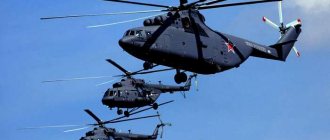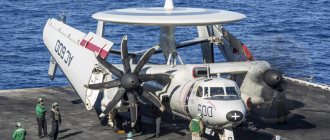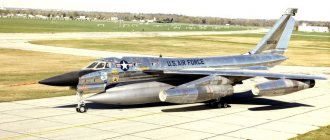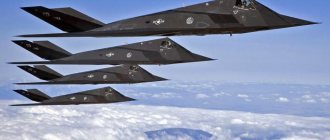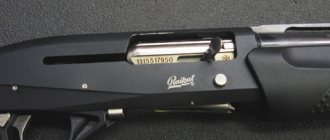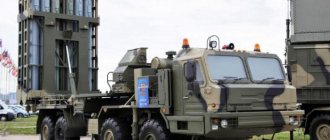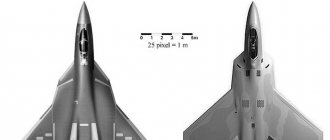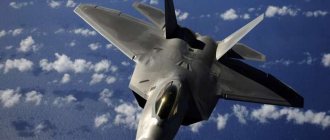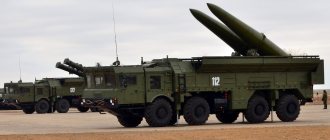The series started
By that time, by the efforts of the Strela MMZ branch named after.
S.V. Ilyushin, the serial design and technological departments, as well as other services of the plant, the entire package of design, technological and operational documentation for the aircraft was completed and put into production. A significant amount of production equipment was created and put into operation in Tashkent, which was used in the construction of prototype aircraft. In particular, a unique closed test bench for the RTK antenna unit was built. After the A-50 was rolled into position, the dome, consisting of two halves, 14 m high and 16 m in diameter at the base, closed along the rail guides with an accuracy of 2 mm at 25 meters of travel, completely covering the “mushroom” with the RTK antenna. He ensured that it was checked so that no radio emission escaped. This stand was used when testing serial sets of the Shmel RTK (RA product) under current and during the production process, as well as for performing various work on combat aircraft.
The decision to launch the A-50 RLD aircraft into production at TAPOiCh was made in 1984, when advance preparations for its production in Tashkent were already underway. Photo: https://en.wikipedia.org/wiki/Beriev_A-50#/media/File:Beriev_A-50_black_white.jpg
At the same time, the plant in Tashkent was extremely busy with the production of the Il-76 in many transport and special modifications and the Il-78 refueling aircraft based on it. Then a plan emerged to organize cooperation on the production of the A-50 with the serial Taganrog Machine-Building Plant (TMZD) named after. Dimitrova. This enterprise built Tu-142 anti-submarine aircraft, the production of Tu-95MS missile carriers at their base was transferred to Kuibyshev, and the promising anti-submarine flying boat Be-42 (A-40) was still only in the project, and the question of launching it into series at TMZD is still was considered only theoretically, because TMZD could easily join the production of the A-50.
Beginning of the article - The task is to expand the horizon! The first AWACS aircraft of the USSR and the USA
Competition between Tupolev, Antonov and Ilyushin design bureaus for the RLD aircraft project
Radio technical complex for radar detection "Shmel". From IL-76 to A-50
A-50 versus Boeing E-3A Sentry. Comparison of combat characteristics of AWACS aircraft
Characteristics and equipment
The main weapon of our A-50 is the powerful radio-technical complex “Shmel”, consisting of:
- three-coordinate radar station with a passive direction-finding channel;
- equipment for collecting and displaying received information;
- systems for active request, response and transmission of commands or target designation information to interceptors;
- digital computing complex for solving control problems and guiding fighters to air targets;
- state identification systems;
- radio control command line equipment; ZAS equipment;
- communication systems;
- telecode equipment;
- documentation equipment.
The total mass of the radio-technical complex is 20 tons. The radar station, operating in the centimeter range, is capable of detecting a fighter-class target flying at low altitude against the background of the earth at a distance of 200-400 km, at high altitude - 300-600 km. Sea targets are detected at a distance of up to 400 km. The number of simultaneously tracked targets is 50-60 (in the improved version - up to 150 targets), the number of simultaneously targeted fighters is 10-12. To detect the launch of tactical and operational tactical ballistic missiles, as well as sea-based missiles, an infrared missile engine plume detection system can be installed on a modernized aircraft, capable of detecting a launching missile plume at an altitude of 10,000 m at a distance of up to 1000 km. Automated operator workstations are equipped with large-format color CRT indicators.
The digital computing complex was built using BTsVMA-50 (Argon Research Institute) with ES computer architecture. The onboard computer will display the processed information on the indicator screen in alphanumeric and plan forms. Data about fighters interacting with AKRDN is also displayed here - numbers, heading, altitude, speed, remaining fuel.
Interaction with interceptors is carried out through fixed automated guidance channels. The range of operational radio communications via the KB channel is 2000 km, and via the VHF channel and broadband radio link - 400 km. There is a satellite radio link providing global communications. The aircraft is equipped with a flight navigation system designed to solve aircraft tracking problems in any meteorological conditions, at any geographic latitudes, at any time of the day, as well as to provide flight navigation information to special complexes.
There is a self-defense complex that provides protection from enemy fighters in the front and rear hemisphere, including active and passive electronic countermeasures (and radar reflectors and mounted batteries with false thermal targets - such an aircraft was first shown on August 11-16, 1992 at Mosaeroshow-92) . The aircraft is equipped with an in-flight refueling system using the hose-cone method. There are devices for releasing false thermal targets.
The aircraft's avionics ensure the performance of combat missions in the event of organized interference and enemy counteraction. According to the chief designer of the Shmel complex, V.P. Ivanov, while inferior to the American E-3 Sentry in target detection range and in the number of automated guidance channels, the A-50 is superior to it in terms of identifying targets against the background of interfering reflections from the earth’s surface. The equipment installed on the A-50 is approximately one and a half times heavier than American equipment for a similar purpose.
The complex also includes several systems that provide communication between the A-50 and other air defense facilities. Everything is done at a modern level, including the use of satellites for coordinate systems and communications. Only 10 operators service Shmel. (For comparison, there are more than 20 of them on Sentry). Like any AWACS, the A-50 is equipped with a radome for a rotating all-round radar antenna. The picture shows its impressive size (diameter 10.5 m, height 2 m). The designers had to solve the problem of aerodynamic and radio engineering combining the radar and the T-shaped tail unit of the Ila. And they placed the fairing behind the wing (not far from the trailing edge) and the center of gravity of the entire vehicle on two pylons, so that its plane (large area) is below the stabilizer, but noticeably above the fuselage.
This arrangement is quite good: the A-50 has been flying for a long time, and there are no special comments on its piloting, although the huge “mushroom” is unlikely to improve the aerodynamics of the aircraft. Obviously, the downward flow created by the fairing reduces the lifting force of the stabilizer, reducing its efficiency, but, on the other hand, the plane of the fairing also creates an additional stabilizing effect. In any case, it would be desirable to increase the area of the stabilizer to improve the efficiency of aircraft pitch control, but the design bureau and the plant did not agree to such changes to the airframe. After all, the radar is installed near the center of gravity, the alignment of the aircraft in flight changes slightly (like a regular Il-76, depending on fuel consumption). The first tests of the A-50 showed that it was necessary to improve pitch stability. For this purpose, as well as to reduce the influence of reflected radio emissions and improve target selection against the background of the ground, large-area triangular horizontal aerodynamic ridges were placed on the rear of the chassis fairings. The APU exhaust pipe is located under the left ridge. A cargo ramp is not functionally needed for this aircraft, so the hatch flaps are covered with metal sheets.
The installation of the radar radome created an additional vortex flow that hits the leading edge of the fin, reducing its effectiveness and significantly affecting directional stability. The designers, taking this circumstance into account, carefully profiled the fairing pylons, and as a result they create a significant stabilizing effect (along the heading). Drop-shaped fairings of powerful electronic warfare equipment are installed on the sides of the nose and tail of the fuselage. In front of the center section there is a radome for satellite communications antennas. Square radio-transparent panels are embedded into the leading edge of the wing and at the roots, and there is also a small air intake on the right. To prevent the “mushroom” from obscuring the upper flashing light, the latter was moved from the center section to the top of the fin. The fairings of the main landing gear retraction mechanisms, which on the IL-76 smoothly disappear at the front and rear, on the A-50 have a constant cross-section almost along the entire length.
Equipment was also located in front fairings with two round cooling air intakes. Therefore, the APU had to be moved from the front part of the left fairing to the rear, under the ridge, and in order for it to operate stably in all modes, the flat air intake with a flap was replaced with a “nostril” protruding upward. Like its predecessor, the A-50 can be refueled in the air - a refueling rod is installed in front of the glazed cockpit, from which an external fuel line runs on the starboard side to the center section. When refueling at night, the boom is illuminated by two retractable headlights. Without refueling, the aircraft can remain on a combat course for up to four hours. A good dozen prototypes, differing in details, took part in the A-50 tests. Thus, vehicles with tail numbers 10 and 15 had the standard shape of the rear parts of the chassis fairings for the Il-76. The antenna radomes for electronic warfare and satellite communications equipment were painted white (in the series they were made dark gray). Another prototype without a number did not have electronic warfare equipment fairings on the sides and “teeth” on the radio-transparent panel under the nose, and the upper flashing light was located above the center section, but the rear parts of the chassis fairings were thicker (which was common in the series).
According to the new plan
According to the new plan, TAPOiCh handed over the aircraft without RTK blocks, some other special equipment and parts of the superstructures, in place of which shipping plugs or centering weights were installed. In this form, the A-50 was supposed to fly to TMZD. This company received the missing components from their suppliers, manufactured some of the superstructures, body parts of the equipment, interior, etc. and installed them. Then it carried out ground testing of the aircraft and all systems under current and pressure, and also carried out acceptance tests, including the required number of flights. However, it was not possible to implement this plan, in particular because the RTK testing stand remained in Tashkent and it was too expensive to transport this 80-ton colossus to Taganrog to assemble it there, or to build another one of the same kind.
The first combat unit to receive the new A-50 aircraft was the 67th ODRAE of the USSR Air Defense Aviation, which previously flew the Tu-126. Photo: https://deskgram.net/explore/tags/a50u
Thanks to the large amount of work carried out by TAPOiCh in a proactive manner, before the release of the above decision and the start of funding, the USSR Air Defense Aviation received the first A-50 aviation complex already in 1984 and the following year began trial operation of the machine by its personnel. 16 years have passed since the start of work on the Shmel complex, and flight tests have already taken more than six years and were still ongoing - more than a dozen of the first production aircraft took part in them, various programs were worked out by both testers from the Air Force Research Institute and construction workers.
For comparison, the Americans spent 13 years on the AWACS AWACS complex and the Boeing E-3A Sentry aircraft, and a little more than five passed from the first flight to the start of deliveries - they managed to do it faster, but not much.
Although the A-50 aircraft and its equipment complex were very labor-intensive, then production went faster. True, for this it was necessary to bring the airframe configuration closer to the Il-76MD and Il-78 - some A-50s were designed as tankers, retaining not only their serial and factory numbers, but also some design features.
MIG-25R - reconnaissance at altitude
High altitude reconnaissance (USSR)
In the West, the plane was nicknamed Foxbat (“Flying Fox”)
The MiG-25R became another response to the American high-altitude reconnaissance aircraft Lockheed U-2. If the Il-20 could monitor a potential enemy from a safe distance, then the MiG-25R had to do this from a high altitude, inaccessible to air defense systems and radars.
The development of the machine began after the decree of the USSR Council of Ministers of February 5, 1962 was issued. In the forward part of the fuselage of the MiG-25 fighter, instead of an on-board radar station, reconnaissance equipment was installed, which consisted of AFA-70 aerial cameras and a Romb-4 general electronic reconnaissance station.
To increase the flight range, additional fuel tanks were placed in the tail section. For its own protection, the aircraft was equipped with a built-in active jamming station “Siren-1F”.
After the SR-71 was removed from service, the MiG-25R became the fastest and highest altitude reconnaissance aircraft in the world.
Assembly of the first vehicle was completed at the end of 1963, and on March 6, 1964, under the name E-155R1, it made its first flight. Subsequent testing took another four years. And only in 1968, already under the name MiG-25R, the aircraft was put into mass production.
Currently, the Russian Air Force is armed with a modification of this vehicle - the MiG-25RB reconnaissance bomber.
It's time to go to work
Tu-126 aircraft with the Liana RTK were operated by the only 67th separate long-range reconnaissance squadron, subordinate to the General Staff of the USSR Air Defense Forces. It was located at the Zoknyai airfield near the city of Siauliai in the Lithuanian SSR, but due to the specifics of the tasks being solved, the 67th Air Defense Air Defense Division operated over the entire Union and over adjacent sea areas.
She was also involved in monitoring the progress of local conflicts bordering our country, for example, the Iran-Iraq war. And so in 1985, the process of replacing the Tu-126 with a new RLD A-50 aircraft with the Shmel complex began, but the first new aircraft went not to Siauliai, but to Monchegorsk on the Kola Peninsula, where there was one of the operational bases of the 67th ODRAE Air defense.
The A-50 long-range radar detection aircraft was adopted by the USSR Air Defense Aviation in 1985. Photo: https://www.airliners.net/photo/Russia-Air-Force/Beriev-A-50/853621/L
As usual, the process of mastering new technology was not easy. Naturally, the majority of failures were attributed to RTC. Dmitry Komissarov in his book “IL-76 - the history of the aircraft” quotes the words of the operator of the Shmel RTK, Major Kholin: “Those who made electronics for us should have their ears cut off!”
In addition to the reliability of the equipment, many troubles were caused by the shortcomings of household equipment, and above all toilets, the noise of operating equipment in the RTK operators’ compartment, the accumulation of static electricity in the most unexpected places, which could noticeably “shake” an unexpecting person, and the worst thing was the negative influence of microwaves on the well-being and health of the flight crew and the RTK crew.
However, now all this manifested itself to a much lesser extent than on the Tu-126. In addition, the flight duration of the A-50 during a flight without refueling did not exceed 7 hours 50 minutes, and even less on patrol, while the Tu-126 could “hang in the air” for more than 10 hours without refueling and 18 hours with one refueling. This was, of course, a drawback of the A-50, but it was easier to serve on it than on the Tu-126.
The A-50 combat aircraft is prepared for towing by a tractor. Photo: author’s archive
Air Defense Aviation combat crews, together with testers from TANTK and the Air Force Research Institute, spent three years completing tests, eliminating defects in the complex and testing its use together with air defense interceptors. Unlike the NATO E-3A, the Soviet A-50 at that time had a purely defensive purpose and their crews were not yet prepared to operate together with front-line and long-range strike aircraft. They could work with Air Force Su-27 and MiG-29 aircraft, etc., but again only when these aircraft solved the tasks of intercepting air targets.
IL-20 - a reconnaissance aircraft that crosses borders with its “look”
Electronic reconnaissance aircraft (USSR)
The Nit radar antenna radome is located under the fuselage.
After an American U-2 reconnaissance aircraft piloted by F. G. Powers was shot down over Sverdlovsk in May 1960, the US military command decided to collect information about what was happening inside Soviet borders using electronic means. For this purpose, in 1964, on the basis of the Boeing 707-320 airliner, a special aircraft was built, called the RC-135. It became a problem for Soviet air defense systems for a long time, since it knew how to look beyond state borders without crossing them. In 1965, the USSR decided to create a similar machine.
They wanted to make the reconnaissance aircraft on the basis of the Il-18D serial airliner, which was the latest and most advanced modification of the Il-18 passenger aircraft. This aircraft could fly long distances and stay in the air for a long time, had a roomy fuselage, and four powerful and fairly economical turboprop engines.
The reconnaissance aircraft based on the Il-18D was called Il-20, or product 20. The main means of reconnaissance was an airborne radar station called “Igla”. This is where another name for this vehicle came from - Il-20 “Igla”.
In the front part of the side overhang, the photo hatch flap is visible, and the rear part, different in color, is the antenna of the Romb-4 station.
The aircraft was also equipped with radio-technical and aerial photographic reconnaissance equipment, a detailed radio-technical reconnaissance station “Kvadrat” and a communications interception system “Cherry”. This entire arsenal had to be serviced by a team of six operators. In addition to them, the crew included two pilots, a navigator, a flight engineer and a flight radio operator.
A crew rest room appeared at the rear of the vehicle. The new aircraft made its first flight on March 21, 1968.
Almost immediately, the modernized Il-20M appeared: the number of operators monitoring the reconnaissance equipment increased to eight.
In the 1970s and 1980s, these aircraft constantly surveyed the territory of the United States and other NATO countries. They were also used during combat operations in Afghanistan. NATO managed to discover and add the Soviet intelligence agent to its “register” only in 1978, perhaps in retaliation by giving it the name Coot, that is, “Simp”. The aircraft is still in service with the Russian Air Force.
Flights: discover NATO
Finally, in the second half of 1987, flights over international waters began to detect NATO aircraft, and on December 4, the first close encounter with them occurred: a basic Lockheed P-3B Orion patrol aircraft of the Norwegian Air Force was spotted from an A-50. The “enemy” was tracked from the moment it took off from Bodø airbase, and the A-50 crew apparently had direct orders not to evade NATO aircraft. Superior to the Orion turboprop in cruising speed by 20%, the jet A-50 could easily have escaped, but did not - and a few days later its first photos appeared in the foreign press, confirming the rumors circulating in the West since 1983 about the existence of "Russian AWACS".
There were always not enough Tu-126 aircraft, and the 67th ODRAE, armed with them, was forced to “drag” around the entire Union, trying to keep up with everything. The production of the A-50 was supposed to be more widespread and the 144th separate airborne early warning regiment (AWACS) was formed on its basis. Having received 20 new aircraft - much more than what was required for one squadron, the 67th already resembled a “poorly camouflaged regiment”, keeping the entire Arctic under control. And although Siauliai remained its main base, the crews spent more time in Monchegorsk - closer to the area of responsibility.
The personnel of the 67th ODRAE began mastering the A-50 and the Shmel RTK in 1984 - first the commanders, and then the rest. Lectures on the design, piloting and operation features of the A-50 and the Shmel RTK were given by the developers, including personally by the chief designer of the aircraft, S. A. Atayants. After them, in 1985, two more military units began the transition to new equipment.
At the Vitebsk-Severny airfield in Belarus, the 18th separate AWACS aviation detachment was formed, which received one Il-76 transport aircraft, used for training flight crews, and two A-50s. Its direction was the west and southwest of the USSR.
Another AWACS detachment was formed at the Vostochny airfield near the city of Ulan-Ude in the Buryat Autonomous Soviet Socialist Republic in the 192nd Guards Kerch Red Banner Military Transport Aviation Regiment, which had already mastered the Il-76. Its composition was the same as that of the 18th JSC AWACS. Having received and mastered new equipment, in 1988 the detachment left for its permanent base at the Ukurey airfield - the Areda garrison in Transbaikalia. It had to be strengthened and patrol the vast air borders with the then hostile China on the mainland and the Pacific Ocean - behind it was America with its “unsinkable aircraft carriers” Japan, Taiwan and South Korea on the immediate approaches.
Aircraft A-50 radar patrol A-50 board 46 from the 144th AWACS at the Pechora airfield—1990s. Photo: author’s archive
Field operation not only confirmed the test results, but also showed that a well-trained operational crew can get more from the equipment than what its passport data guaranteed. All types of interaction with ground command posts and interceptors in the air were mastered, demonstrating the correctness of the chosen concepts. New aircraft not only detected targets and warned about them, but also controlled their aviation group.
"LOCKHEED U-2" - American spy
High altitude strategic reconnaissance (USA)
Under the wings of the U-2 there are two removable “super containers” for special equipment
Work on a reconnaissance aircraft capable of flying at an altitude of more than 20 km and covering a distance of over 9,000 km began in the USA in 1954. A year later, such a machine took off. The U-2 aircraft was almost immediately adopted by the CIA. Invisible and silent, separated from ground surveillance by many kilometers, he began making reconnaissance flights over most countries of the world.
Beginning in 1956, rising from the NATO airfield in Incirlik (Turkey), the Lockheeds circled over the territory of the USSR. One such aircraft, piloted by F. G. Powers, was shot down near Sverdlovsk on May 1, 1960. Two years later, another one belonging to the Taiwanese government was hit over Chinese territory.
After this, the U-2 underwent significant changes, the most serious of which resulted in the appearance of the “R” modification. The first flight of the updated reconnaissance aircraft took place on August 28, 1968. The plane increased in size and weight, but it also had more powerful engines and larger fuel tanks.
A radome of the Senior Span system is installed above the fuselage of the U-2R, designed to transmit intelligence data over very long distances in real time.
Flights on the U-2 were quite a difficult test for the human body. Often I had to fly with the engine turned off, in gliding mode. The pilot, wearing a pressure helmet and a high-altitude suit, could neither eat nor drink, and was also deprived of the ability to communicate with the ground.
Lieutenant Powers, right before flying to the USSR, accidentally learned from a mechanic another feature of this machine: it turns out that the ejection seat was equipped with an explosive device so that the pilot who left the plane would not fall to the enemy alive. Powers himself got out of the plane without the help of a catapult and, being in free flight for a long time, only opened his parachute near the ground. There are currently 35 of these vehicles in service with the US Air Force, now bearing the name TR-1.
A U-2 flight can last 12 hours, so a food heating device is installed in the cabin, similar to heating space food in tubes
The U-2 uses an unusual landing gear design: a main front landing gear, an auxiliary rear landing gear, and supporting supports on the wings.
Fitness is important
Typically, the entire procedure for pointing interceptors at one group of targets took no more than a few minutes, and a good result was, if not guaranteed, then very likely. And if in 1985 the main obstacle to achieving it was the reliability of equipment, then in 1989 a good grade was mainly determined by the quality of work of the personnel, their qualifications, composure and responsibility.
With all their shortcomings, the Shmel complex and the A-50 aircraft immediately earned respect even among the most inveterate skeptics, of whom there were too many in that “perestroika” time, when criticism of everything domestic was the most fashionable pastime, both in combat units and especially at headquarters at all levels.
The author of this article, like probably the majority of his generation, remembered that time for the rapidly falling standard of living, which was associated, as they said then, with a sharp drop in world oil prices, to the export of which the then leadership of the country “attached” social benefits budget. It was caused by a game started by the United States with the help of partners in the Middle East, including Kuwait, and hit hard not only the USSR, but also other countries. The leadership of Iraq, which then did not recognize Kuwait, which had been torn away from it by the British colonialists as a sovereign state, after an attempt to resolve the issue of oil production quotas and prices, supported the “sudden” coup there and sent its troops into Kuwait on August 2, 1990.
The United States initially favored a military solution, assembling a coalition of 50 states, 36 of which contributed a large military force, including, among other things, more than 2,000 combat aircraft. The latest A-10 attack aircraft, tactical fighters and attack aircraft F-14, F-15, F-16, F-18, F-117, Mirage 2000 and Tornado were brought to the conflict area, and preparations were made at bases in the United States armed with B-52 cruise missiles. It was also announced that there would be a planned use of cruise missiles from ships and submarines in the Persian Gulf against Iraq.
USSR Air Force A-50 aircraft over international waters, photographed from a NATO aircraft on August 26, 1988. Photo: https://de.wikipedia.org/wiki/Berijew_A-50#/Beriev_A-50_color.jpg
The Moscow leadership made it clear that it does not intend to interfere and “cover up” its ally Saddam Hussein, whom it recently actively helped fight against Iran. But I still wanted to know what was happening, and the A-50 plane gave me such an opportunity. In the summer of 1990, two “Bumblebees” were transferred to Crimea to one of the airfields of the Black Sea Fleet Air Force and began to monitor aviation flights in the zone of the developing conflict.
The Multinational Force (MNF) “Desert Shield” exercise had just begun there, and on January 17, 1991, massive attacks by Iraq and its troops in Kuwait began from the air - Operation Desert Storm began.
During flights to monitor aviation activities in the Persian Gulf War, the Shmel RTK showed all its capabilities - the data received could have been of great help to the Iraqis, but they were not transmitted. Even the USSR’s own military and, especially, political leadership, as it turned out, were no longer very interested in them - events were brewing in comparison with which “Desert Storm” looked like a breeze. The great country was being dragged towards collapse.
